Infected Tattoo: Causes, Stages, & How To Identify It
Treat infection the right way to preserve the beauty of your ink.
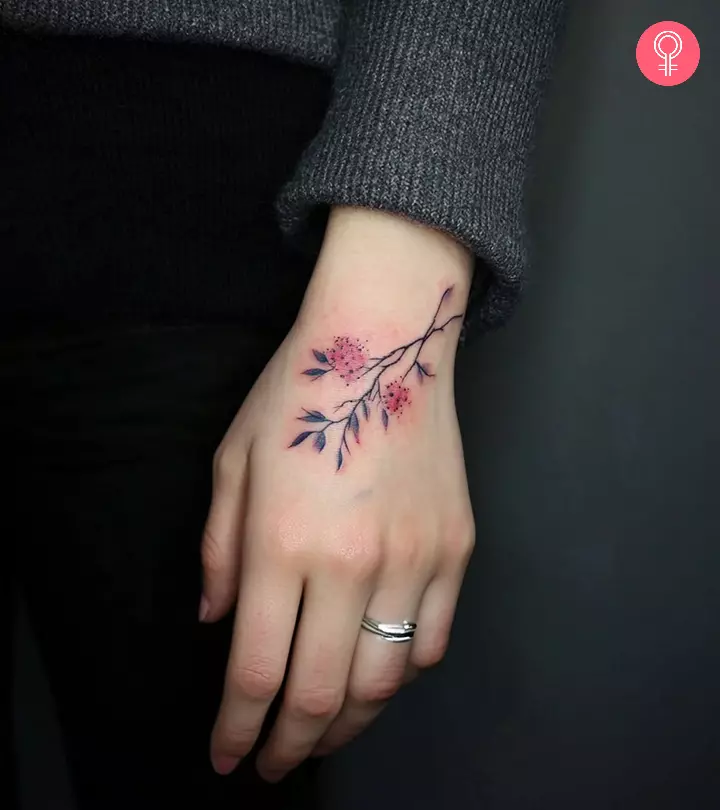
Image: Midjourney/ StyleCraze Design Team
An infected tattoo is a condition where harmful microorganisms infiltrate the skin and cause an inflammatory response. It is characterized by symptoms like redness, swelling, and discomfort. An infected tattoo may pose risks to both the aesthetic integrity of the ink and your overall well-being. The introduction of pathogens may occur during or after the tattooing process due to contaminated ink or micro-organisms like bacteria, leading to complications that require prompt attention (1).
Understanding the nature of an infected tattoo will help you address potential concerns and ensure a more informed approach to maintaining the health and vibrancy of your body art. Keep scrolling to learn more about what causes a tattoo infection and the signs to look for.
In This Article
Causes Of A Tattoo Infection

Tattoo infections can stem from various factors, from unsterilized equipment and poor aftercare to compromised immune systems. Understanding the cause behind the infection is essential for safeguarding your ink and improving your well-being.
- Unsterile Equipment: If the tattoo artist does not follow strict hygiene or sterilization practices and uses contaminated equipment, the risk of infection and contracting tattoo flu during the tattooing process increases. Make sure you get your tattoo at a hygienic place.
- Poor Aftercare: Neglecting proper aftercare instructions, like not keeping the tattoo clean or picking at scabs, creates an environment conducive to bacterial entry that can increase the risk for infection.
- Contaminated Ink: In some cases, the tattoo ink itself may be contaminated. These tattoo pigments can react with your skin, leading to severe infections. Ensuring the tattoo ink and its sources are reputable is essential for avoiding infections.
- Compromised Immune System: Your body may struggle to fend off potential skin infections if your immune system is weakened due to illness or medication.
- Excessive Moisture: Keeping the tattoo excessively moist, especially in unclean conditions, may serve as a breeding ground for bacteria and cause skin infections.
 Trivia
TriviaIdentifying an infection is key to treating it in a timely manner. Learn about the signs you need to look out for in the next section.
Key Takeaways
- Watch for persistent redness, swelling, pain, and unusual discharge, indicating a potential infection.
- Be attentive to signs like fever, chills, or fatigue, which may indicate a deeper issue requiring medical attention.
- Resist the urge to touch or scratch the tattoo to prevent introducing bacteria and potential infections.
- Shield your tattoo from direct sunlight and use mild and gentle soaps, moisturizers, and sunscreens over the area.
How To Identify A Tattoo Infection
Redness, swelling, and pain are some common signs of an infected tattoo. But sometimes, you may not notice these signs but still suspect an infection. Therefore, it is important to know what to look out for in both these scenarios.
I. Signs Of An Infected Tattoo

Recognizing the signs of an infected tattoo is crucial for maintaining both the visual appeal of your ink and your overall health. Be on the lookout for these signs.
- Persistent redness: It might be a sign of infection if the redness around your tattoo does not subside after the initial healing phase.
- Unusual swelling: Excessive or prolonged swelling that goes beyond the normal post-tattoo inflammation could indicate an issue.
- Abnormal discharge: During the healing process, look for any discharge. If it changes from clear plasma to yellow or green pus, it’s a warning sign.
- Intense pain: While some discomfort is expected, if you experience sharp or increasing pain, it’s a cause for concern.
- Spreading rash: Watch for the appearance of a rash that extends beyond the tattooed area. If you notice bumpy skin, it could be a symptom of a tattoo rash.
- Sweating: Avoid strenuous activities that may cause excessive sweating or friction on the healing tattoo as it may cause infections. Give it at least 1 to 2 weeks before resuming your high-intensity workouts.
- Biofilm formation: Infections may involve the formation of biofilms — a shield that protects the bacteria from outside interference. Biofilms can make infections more resilient and challenging to treat (2).
- Other symptoms: Fever, chills, or fatigue are indicators that the infection might be affecting your overall health.
If you notice a combination of these signs, seek immediate medical care to ensure timely intervention. However, there may be some confusing instances where you cannot tell if your tattoo is infected or not. Keep reading to know what to do then.
II. What To Do If You Cannot Identify The Signs
- If you cannot tell whether you have an infection or not, you should immediately consult a dermatologist.
- They will inspect the tattooed skin to check for the above-mentioned signs.
- Additionally, they will check when you got your tattoo done, the tattooing process, and your aftercare routine.
- In order to diagnose the infection and its cause, they may recommend getting a blood test or a skin culture lab test done to determine if the infection is viral, bacterial, or fungal.
The section below details accurate infection stages after getting a tattoo. Continue reading to stay informed.
Tattoo Infection Stages
Knowing the different stages of infection allows you to take the right steps and get the appropriate medical help when needed. Seeking early medical attention can prevent complications and lead to better treatment.
You should monitor your tattoo and its infection closely to check the stages (3):
Stage 1: You experience dull pain and tenderness in the tattooed area.
Stage 2: You notice inflammation, swelling, and sudden warmth.
Stage 3: The redness expands over hours or a couple of days.
Stage 4: You notice minor bumps that may or may not rupture or ooze pus.
Stage 5: You experience the emergence of ulcers and other skin lesions sling with a weird gray discharge that points to tissue death.
Stage 6: You feel feverish and faint as a result of your body trying to fight the infection.
Once you know your tattoo is infected, you immediately want to treat it. Most people tend to look for home remedies or creams that they can use before consulting a doctor. However, before going ahead with any medical treatment, you should know what type of pathogen had caused the infection in the first place.
Infected Tattoo Treatment

Antibiotics and other medications may be prescribed to you by a medical professional depending on the type of infection you have. Bacteria, including Staphylococcus and Streptococcus, are common causes of infection and thrive in unsanitary conditions or through improper aftercare (1). Viruses like herpes simplex virus, human papillomavirus and molluscum contagiosum, may also pose a risk, especially if present on the tattooed skin or transmitted during the tattooing process (4). Fungal infections, often from contaminated ink or unclean equipment, are another concern (5). As you embark on your tattoo journey, understanding these potential invaders is crucial.
There are some ways you can reduce the discomfort and inflammation associated with tattoos (1):
- Take Anti-Inflammatory Medications: Over-the-counter medications like Tylenol and nonsteroidal anti-inflammatory drugs can help reduce inflammation and alleviate discomfort. Antihistamine medications may also be used to soothe allergic symptoms.
- Use A Cold Compress: Apply a cold compress to the tattooed area to ease inflammation and numb the discomfort. Avoid direct contact with ice; use a cloth or towel.
- Topical Ointments: Use prescribed or recommended topical ointments containing anti-inflammatory and antimicrobial properties to soothe the tattooed skin. You may be prescribed drugs that eliminate specific microorganisms, such as an antifungal ointment, to treat viral infections.
- Avoid Sun Exposure: Protect your tattoo from direct sunlight, as UV rays can worsen inflammation. If you have to go outside, use a tattoo-friendly sunscreen with a SPF level of 50 or higher.
- Keep It Clean: Follow proper aftercare hygiene to prevent infections and reduce irritation. Gently wash the tattooed skin with an antimicrobial soap and warm water. Dab the skin dry with a clean microfiber towel. Then use sterile bandages to cover the inked skin and gloves to avoid direct skin contact.
- Rest: Allow the tattooed area to rest, and if possible, keep it elevated to minimize swelling.
 Pro Tip
Pro TipAre there any preventative measures that you can take to avoid a tattoo infection? Scroll on to learn more.
How To Prevent Infected Tattoos
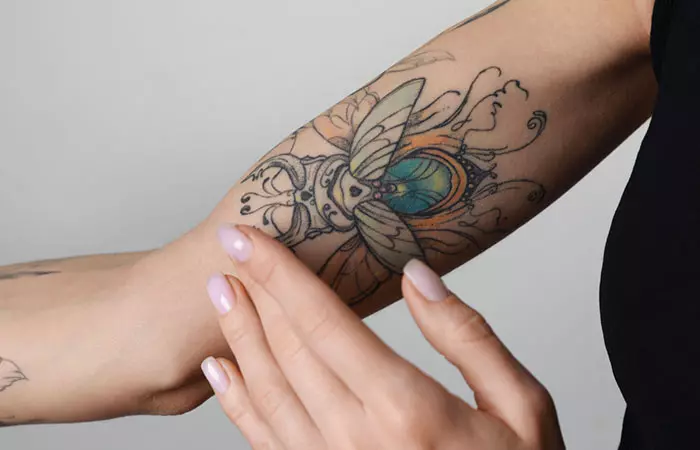
The first thing to consider after you decide to get a tattoo is to find a licensed and reputable artist and tattoo parlor. You might also want to consult with your doctor or dermatologist if you have any medical or skin conditions that might worsen due to the tattooing process or ink used.
Mentioned below are some of the questions that you should ask your licensed tattoo artist before getting started with your tattoo session:
- How do you ensure the cleanliness of your equipment? Do you follow certain sterilization practices for your equipment?
- What kinds of hygienic practices do you follow before and after every tattoo session?
- Can I see examples of your work in a portfolio?
- Can you provide references from past clients who had a similar style or design?
- What aftercare instructions do you recommend for my specific tattoo?
- Can you provide advice on managing pain during and after the tattooing process?
- Are there any specific rules or policies I should be aware of when getting a tattoo at your studio?
- What should I do if I have concerns or questions after the tattoo is completed?
Aftercare is really important after getting a tattoo to ensure optimal healing without increasing the chances of an infection. Some tips that you can follow are:
- Gently wash your tattoo with mild, fragrance-free, antibacterial soap and water to remove excess ink and avoid infection.
- After washing, pat your tattoo dry with a clean, soft cloth instead of rubbing to prevent irritation.
- Use the ointment or moisturizer suggested by your tattoo artist to keep the area hydrated and promote healing.
- Opt for loose, breathable clothing to prevent friction and irritation on the healing tattoo.
- Steer clear of swimming pools, hot tubs, and prolonged water exposure until the tattoo is fully healed.
- Schedule and attend any follow-up appointments with your tattoo artist to ensure proper healing and address any concerns.
- Avoid heading out into the sun for at least two weeks after getting a tattoo. If you do have to go out, always wear a broad spectrum sunscreen with SPF 50 or higher. It is best to check with your doctor which sunscreen would work best for your skin type.
Ashley Nguyen, a blogger, shares her concerns about getting a tattoo and how she reduced the risk of contracting an infection from tattoos. She writes, “When I received my tattoo, I was very nervous about the risks of infections and disease. However, when… choosing a tattoo salon we made sure that that tattoo salon was clean and had a good reputation (i).” She continues, “To prevent infections and disease personally, I made sure to keep my tattoo clean, I did not itch it, and I also kept it out of water.”
If these treatments don’t work out and you feel like your tattoo is developing a severe infection, then it’s time to consult a professional.
When To Consult A Doctor

If you experience any of the signs of infection mentioned above, it is time for you to consult a doctor.
Depending on your condition, the doctor may:
- Examine the infected area to evaluate the severity of the infection and inquire about symptoms and recent care practices.
- If a bacterial infection is confirmed, the doctor may prescribe oral antibiotics or antibiotic ointments to address the underlying cause. Follow the prescribed course diligently.
- Depending on the infection’s stage, the doctor may recommend or prescribe topical ointments to aid in the tattoo healing process.
- In severe cases or if the infection is not responding to initial treatment, additional tests may be conducted to identify specific pathogens.
- The doctor may schedule follow-up appointments to monitor progress, adjust treatment if necessary, and ensure the infection resolves effectively.
- Your doctor may suggest a tattoo removal procedure if there is little to no improvement.
Frequently Asked Questions
What are the most common causes of tattoo infections?
Tattoo infections are often caused by using unsterilized equipment, following poor aftercare practices, or allowing bacteria to enter the open wound.
How can I tell if my tattoo is healing properly?
A healing tattoo should gradually scab and peel without excessive redness, swelling, or pain, and the area should look better over time.
What should I do if I suspect my tattoo is infected?
If you think your tattoo is infected, contact a doctor right away. Follow their advice and avoid scratching or applying any harsh products.
Are there any home remedies for tattoo infection?
It is best to see a doctor for infections, but keeping the area clean, applying antibacterial ointment, and avoiding irritation can help while you wait for professional advice.
Can I get sick after getting a tattoo?
While uncommon, complications such as infections or tattoo allergy can occur after getting a tattoo. If you experience persistent symptoms like fever or severe pain, consult a healthcare professional immediately.
Why are there bumps on my tattoo?
Bumps on a tattoo may result from various factors, including an allergic reaction, infection, or an issue during the healing process. It is best to seek advice from your experienced tattoo artist or a healthcare professional to better understand the cause.
How common are tattoo infections?
Tattoo infections are relatively uncommon when proper hygiene and aftercare practices are followed. Your tattoo artist can help reduce infection risk if they follow professional guidelines.
Can I get tattoos while on antibiotics?
It is best to avoid getting permanent tattoos while on an antibiotic treatment. Antibiotics may affect your body’s ability to heal, potentially leading to complications during the tattooing process and slowing down your healing process.
How long does it take for a tattoo to get infected?
Infection may occur within days to weeks after getting a tattoo if hygiene is not maintained and proper aftercare is not followed.
What is the difference between an overworked tattoo and an infected tattoo?
An overworked tattoo may appear excessively faded, blurry, or distorted due to aggressive tattooing. In contrast, an infected tattoo shows signs like redness, swelling, and discharge, indicating a health issue requiring medical attention.
Why does my tattoo hurt after a year?
Prolonged tattoo pain after a year may result from various factors, including overexposure to sunlight, skin conditions, or the tattoo’s location. It is best to seek advice from a healthcare professional.
How to tell if a tattoo is infected or just healing?
An infected tattoo exhibits persistent redness, swelling, pain, and discharge, often accompanied by fever. Normal healing includes mild discomfort, temporary redness, and scabbing that gradually diminishes to reveal healed skin. Hence, it is crucial to know how to take care of a new tattoo and follow the instructions provided by the tattoo artist.
Illustration: Infected Tattoo: Causes Stages & How To Identify It

Image: Dall·E/StyleCraze Design Team
Taking care of your tattoo takes a lot of effort, but if your tattoo is already infected, it needs more than just aftercare. The video below tells you all you need to do and all that you need to avoid if you have an infected tattoo. Check it out!
Personal Experience: Source
StyleCraze's articles are interwoven with authentic personal narratives that provide depth and resonance to our content. Below are the sources of the personal accounts referenced in this article.
(i). Riskshttps://artkabnguyen.wordpress.com/2012/12/03/risks/
References
Articles on StyleCraze are backed by verified information from peer-reviewed and academic research papers, reputed organizations, research institutions, and medical associations to ensure accuracy and relevance. Read our editorial policy to learn more.
- The Risk of Bacterial Infection After Tattooing, Deutsches Arzteblatt international vol. 113,40 (2016).
https://www.ncbi.nlm.nih.gov/pmc/articles/PMC5290255/ - Microbial Biofilm: A Review on Formation, Infection, Antibiotic Resistance, Cthe most common causes of tattoo infontrol Measures, and Innovative Treatment
https://www.mdpi.com/2076-2607/11/6/1614 - Infections from Body Piercing and Tattoos, American Society for Microbiology Journal.
https://journals.asm.org/doi/10.1128/microbiolspec.iol5-0016-2015 - Viral Infections Confined to Tattoos—A Narrative Review, National Library of Medicine.
https://www.ncbi.nlm.nih.gov/pmc/articles/PMC8955137/ - Tinea and Tattoo: A Man Who Developed Tattoo-Associated Tinea Corporis and a Review of Dermatophyte and Systemic Fungal Infections Occurring Within a Tattoo, National Library of Medicine.
https://www.ncbi.nlm.nih.gov/pmc/articles/PMC8840820/ the most common causes of tattoo infections
Read full bio of Mengni Yang
Read full bio of Shreya Mukherjee
Read full bio of Anjali Sayee
Read full bio of Gazala Firdos Ansari







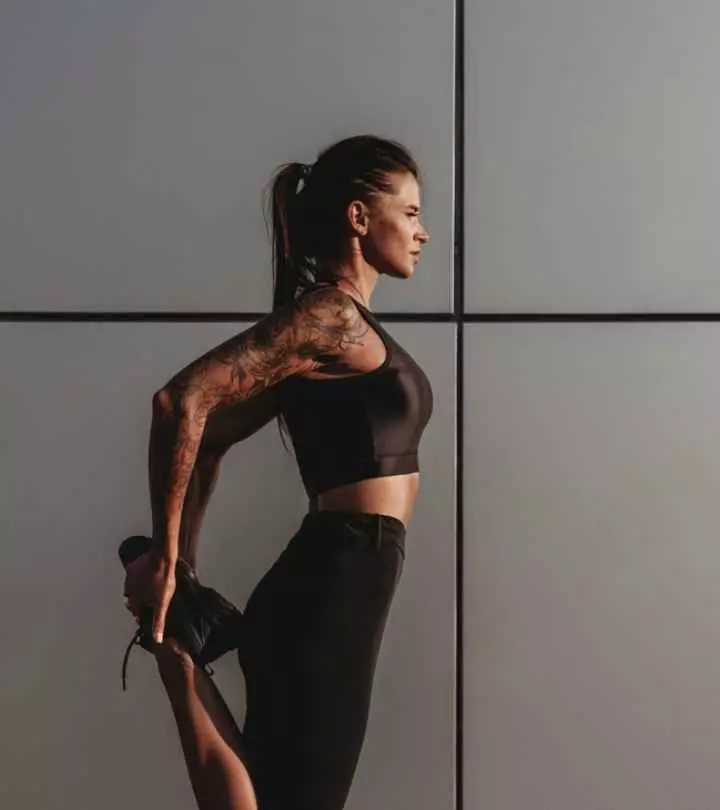

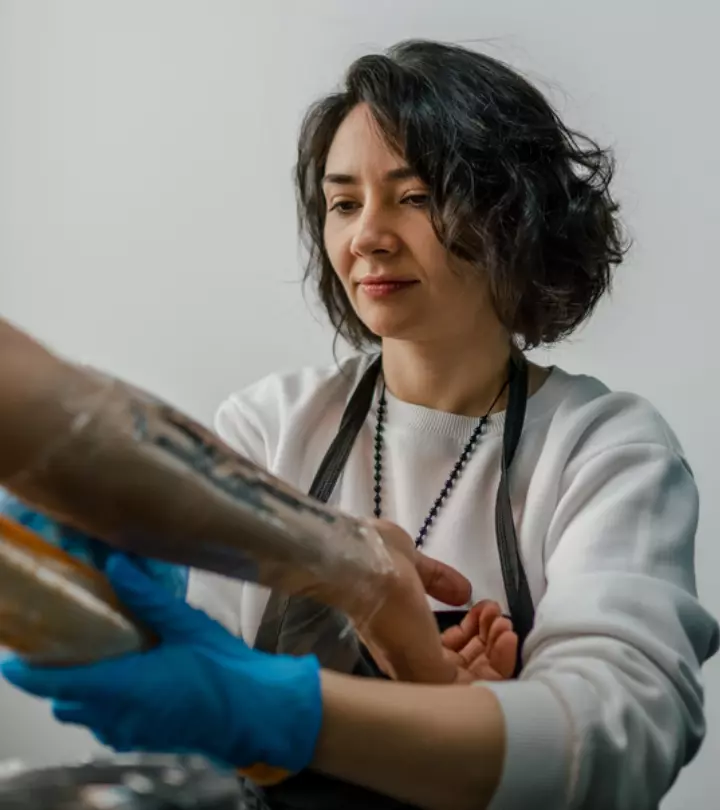





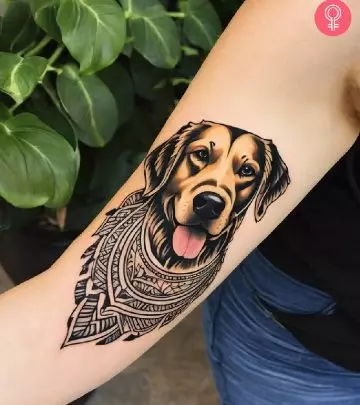

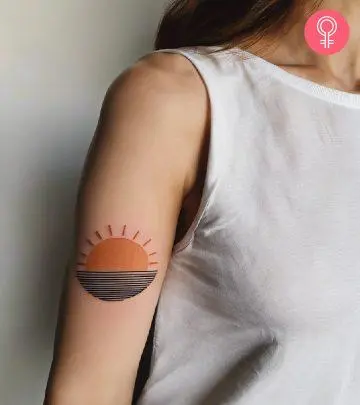









Community Experiences
Join the conversation and become a part of our empowering community! Share your stories, experiences, and insights to connect with other beauty, lifestyle, and health enthusiasts.